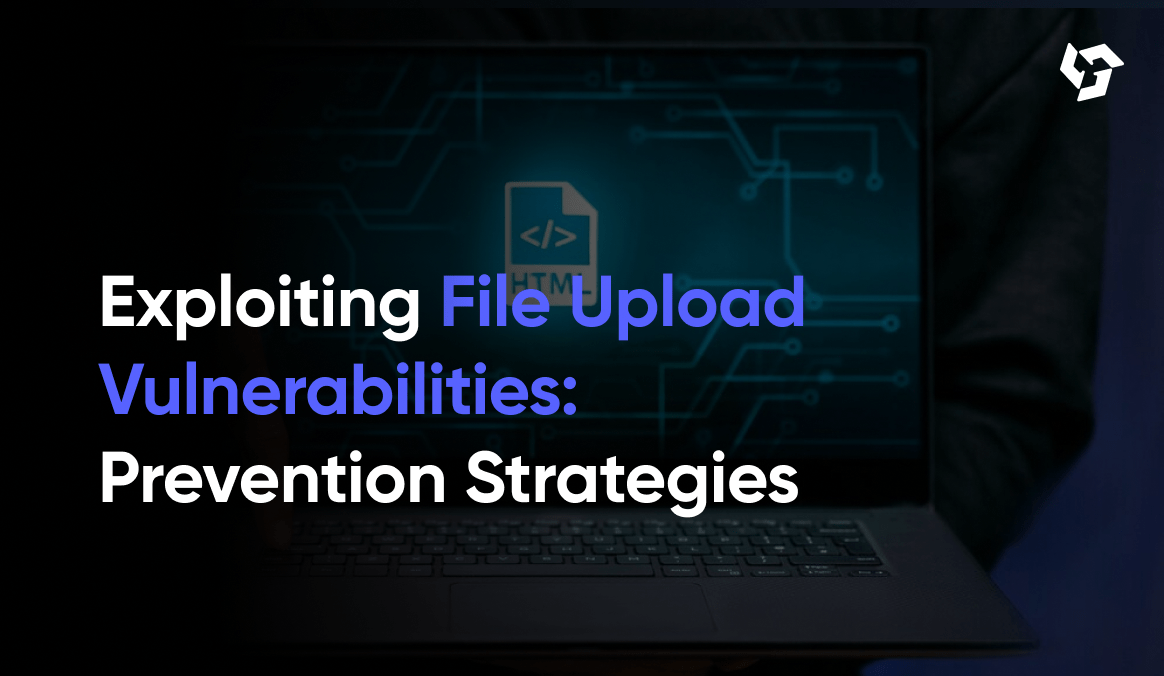In today’s world, the ability to upload a file in any web application is a very common feature. Be it uploading your resume in any job portal or adding files to create a pdf. Users are empowered by file uploads, allowing them to share photographs, documents, and videos, boosting collaboration and improving user experiences. However, the same feature that improves user engagement often creates new issues that can create a topic of concern. Let’s have a look!
What is a file upload vulnerability?
Inadequate validation and security procedures in web application file uploading functionality lead to file upload vulnerabilities. Exploiting these flaws allows the attacker to bypass limitations and upload malicious files, potentially leading to system compromise or the execution of malicious code.
This single flaw can result in cross-site scripting, server-side scripting, arbitrary code, and CSRF attacks.
Any vulnerable application with an option to upload files can easily accept any malicious code since it lacks proper validation of the file uploaded.
Let us continue to what all scenarios can take place which can cause File Upload Vulnerability:
- Inadequate File Validation: When file types, extensions, and content are not properly checked, attackers may be able to upload malicious files by masquerading them as original ones.
- Insufficient File Permissions: Inadequately set file permissions can allow unauthorized users to access or execute uploaded files.
- Failure to Sanitize Inputs: Malicious code embedded in uploaded files may be executed due to inadequate or nonexistent input validation.
- Privilege escalation through file uploads: In a multi-user system without proper authorization control, regular users can upload files to directories intended for administrators. Exploiting this vulnerability, attackers can upload files that grant elevated privileges potentially compromising the system or accessing sensitive areas without authorization.
- Cross-Site Scripting: Considering a messaging platform allowing file attachments, and lacking validation, it allows the attacker to upload files containing scrips that, when downloaded by others trigger cross-site scripting.
A practical example:
Let’s say a user attempts to upload a malicious file by renaming a JavaScript file ‘unknown.js’ to ‘photo.jpg’ and tries to upload it to the application.
The vulnerability lies in the fact that the application checks the file extension(‘jpg’, ‘js’, ‘gif’) rather than verifying the file’s actual content. So, despite the file being named ‘photo.jpg’ contains JavaScript code.
This scenario depicts why it becomes important to validate both the file extension and the file content.
File Upload Vulnerability, when left unaddressed as we discussed above, poses a substantial risk that can have a disastrous impact on the users and businesses alike. The implications of these breaches have implications that go beyond just immediate financial losses, they also have negative consequences on an organization’s reputation and legal rights.
Let’s have a look at some of them:
- System compromise: Malicious uploads can often lead to a complete compromise of the system, causing widespread damage to the infrastructure.
- Business Continuity: Extended disruptions may affect regular operations in a business, leading to reduced productivity, and delayed projects.
- Financial Loses: The aftermath of a breach often involves financial implications such as investigating the incident, and implementing security upgrades.
How do we avoid these situations to occur?
Well, File Upload vulnerabilities can be avoided if followed by the right approach like:
- Renaming Files Uploaded: When a file is uploaded, rename it to stop hackers from running files with known names. An additional layer of security is added by assigning unique identifiers or randomly generating filenames.
- Put Strict File Validation into Practice: Enforce strict file upload validation guidelines, which should include verifying file sizes, types, and contents. To avoid flooding the server, only accept necessary file formats and set a file size limit.
- Make Use of Server-Side Security Measures: Make extensive server-side validation and checks to confirm the accuracy of files that have been uploaded. This involves verifying inputs, checking that file headers correspond to content, and scanning files for malware.
- Isolate Uploaded Files Apart: Save files that have been uploaded in a different directory with limited access. Don’t put uploaded files in directories that can be accessed and used by executable scripts.
And that’s it for today!
So now we know what exactly is File Upload Vulnerability and what are some common scenarios where it can take place. We also covered some very important points to not let this vulnerability arise in our applications in the future.
Read about other vulnerabilities in blogs here.


